Environmental policy10.06.2023
Decarbonization of extractive industries of the Republic of Kazakhstan

B.K.Yessekina, Member of the Green Economy Council under the President of the Republic of Kazakhstan, Director of SREC "Green Academy", Doctor of Economics, Professor
The problem of global energy transition based on principles of decarbonization, technological modernization and integration of ESG principles into corporate governance processes is core of modernization of long-term economic development strategies of both developed and developing countries.
As is commonly known, the Decree of the President of the Republic of Kazakhstan K.K. Tokayev dated 2.02.2023 (N120) approved the Strategy for Achieving Carbon Neutrality of the Republic of Kazakhstan by 2060. In this regard, the multi-authored monograph* of well-known Kazakhstani scientists and experts devoted to development and substantiation of theoretical and methodological provisions and practical recommendations to the Government on achieving carbon neutrality at the national level is very timely and relevant and represents a pioneering study not only in Kazakhstan, but also for the Asia-Pacific countries.
The authors begin their research by substantiating the conceptual provisions of decarbonization based on generalization of international experience of the energy transition. It is established that at present, a kind of "carbon revolution" is taking place in the world economy, associated with new economic priorities, changes in the structure of the economy, introduction of carbon pricing.
Based on the analysis of global carbon markets, it is determined that in the coming decades, low carbon, based on reducing the negative impact on the climate and increasing energy efficiency, will become a key characteristic of advanced economies, since many economies of the world will have a new innovative and technological basis.
The authors propose to consider low-carbon development as an important part of the concept of sustainable development aimed at preventing the catastrophic consequences of global climate change. Reducing the consumption/burning of carbon-containing fossil fuels plays the major role in formation of low-carbon economy in most countries. In this regard, countries that have ratified the UN Framework Convention on Climate Change (UNFCCC), including the Republic of Kazakhstan, in order to increase its competitiveness, it is necessary to assess the potential of decarbonization and possibility of using low-carbon technologies, as well as to identify existing barriers and challenges that need to be overcomed in solving the task of reducing emissions at the national and regional levels.
An unconditional contribution to development of theory of decarbonization is justification of following principles of transition to low-carbon development:
1. In order to limit the average global temperature to 1.5 °C from pre-industrial level, as stipulated by the Paris Agreement, it is necessary to reduce greenhouse gas emissions by at least 25% from the 1990 level by 2030.
2. The decarbonization policy of the country should be based on technological modernization based on use of alternative and digital technologies in basic industries;
3. Payment for greenhouse gas emissions should not be considered as a way to replenish the budget, but only as a way to redistribute funds in order to transfer the economy to a low-carbon path of development. It is advisable to consider the possibility of reducing the rates (up to zero) for some taxes or the possibility of their complete abolition.
4. The emission control system should provide for a wide range of measures to support and stimulate investment in low-carbon projects and sectors with tax exemption, subsidizing interest rates and co-financing of relevant projects from budgets or from special funds for low-carbon development.
5. Decarbonization should not be just a business matter, it should become the goal of entire state economic policy, which should be reflected in the Implementation Plan of the Strategy to achieve Carbon Neutrality and, accordingly, in the system of strategic planning and budgeting.
In the course of critical understanding of the international experience of technological modernization in ensuring the energy transition (studies by IEA, UNFCCC, IPCC, UNIDO, etc.), it was determined that the most effective technological solutions that ensure economic growth and at the same time reduce emissions include:
- transition to low-carbon or carbon-free fuels;
- decarbonization of electricity production;
- electrification of economy and its individual branches;
- improving the efficiency of energy production and consumption;
- application of carbon capture and storage technologies;
- use of geothermal energy and other renewable energy sources;
- preservation and increase of potential of CO absorption, including in forestry and land use.
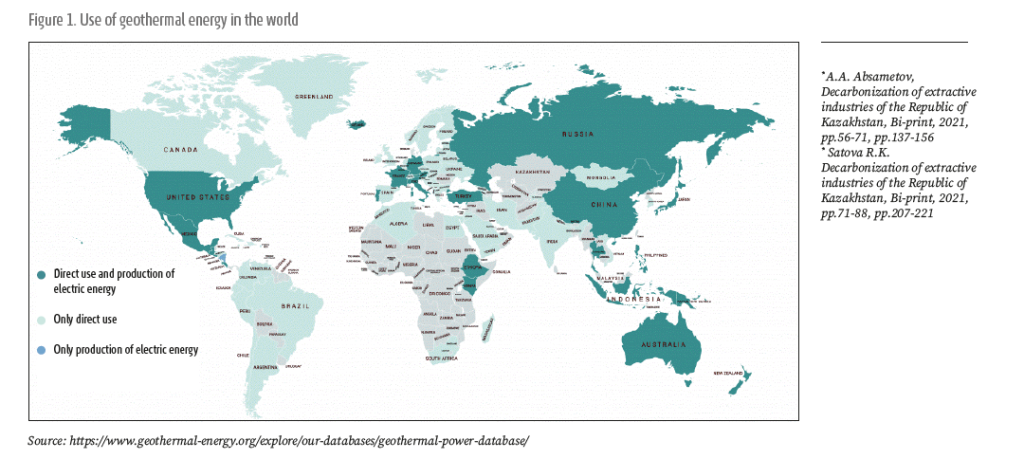
As an important decarbonization potential of the national economy, the authors of monograph define the development of integrated geothermal heat supply systems* that can provide heating and hot water supply to civil, industrial buildings and technological needs of production (car washes, laundries, etc.), as well as heating greenhouses, schools and other social objects with simultaneous achievement of ecological and economic effect.
It is established that three main types of energy systems based on thermal waters are used in the world:
- direct use from district heating system operating in dry steam deposits;
- geothermal power plants (with steam generator) operating on hot water deposits under pressure;
- geothermal heat pumps with a binary cycle, in which geothermal heat is transferred to a secondary fluid (for example, saline solutions, freon or isobutane) and classical Rankine cycle occurs.
Currently, exploration and exploitation of geothermal steam fields is conducted in more than 80 countries of the world, and their industrial use has been mastered in 60 countries. In 2000, geothermal thermal power plants operated in 59 countries with a total installed capacity of 15.2 thousand tons . MW and an annual output of 193 thousand TJ, which allowed saving 9.2 million tons.
During the study, the natural reserves of hydrogeothermal resources of Kazakhstan with temperatures from 40°C to more than 100°C were estimated at 10275 billion m3 of water and 680 billion Gcal of heat, which is equivalent to 97 billion tons of conventional fuel or 2.8 billion TJ, and is comparable to the resources of traditional fuel sources of heat. Geothermal sources are mainly located in Western Kazakhstan - 75.9%, in Southern Kazakhstan - 15.6% and in Central Kazakhstan - 5.3%.
An important practical contribution of the study was clarification of criteria and definition of promising areas for practical use of geothermal energy of the subsoil of Kazakhstan. At the same time, the factors constraining the development of this type of energy were substantiated, among which: the location of geothermal sources in sparsely populated areas and significant distance from large potential consumers of thermal energy of the subsoil, etc. The following are the most promising for extraction of thermal-energy groundwater with a mineralization of up to 3 g/dm3 with a temperature of up to 70-100 °C: artesian basins of Southern and South-Eastern Kazakhstan: Arys, Almaty and Zharkent. In these areas, underground thermal waters have low mineralization, mainly 0.5-3 g / dm3, and the temperature at self-discharge ranges from 50 - 60 ° C to 90-100 ° C.
As an important direction for decarbonization, the authors of monograph consider the potential and prospects for use of hydrogen and hydrogen technologies.
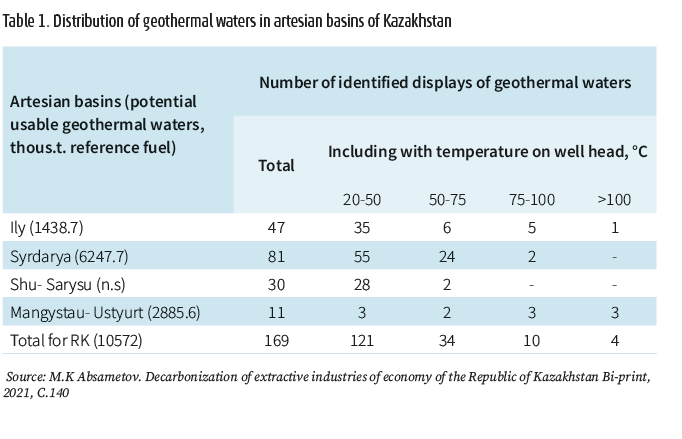
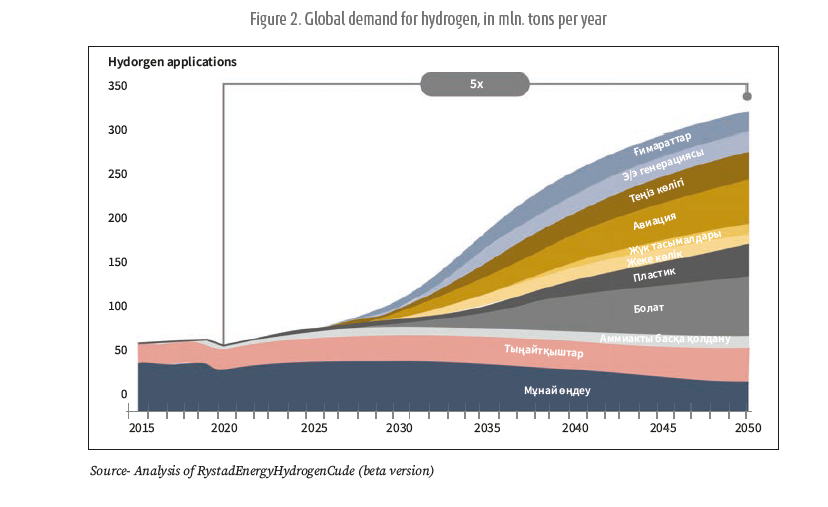
It is determined that hydrogen is used mainly in oil refining and fertilizer production. However, the range of applications of hydrogen can be much wider. In the conditions of energy transition, it is necessary to use hydrogen in such sectors as transport, buildings, and electricity generation.
At the same time, the production of hydrogen by steam conversion of light hydrocarbons (most often methane) or coal (mainly in China), as well as water electrolysis, despite its relatively wide application in various fields of industry, has limitations due to the lack of necessary infrastructure and competition from cheaper, affordable and easy-to-use energy sources. In this regard, transition to use of hydrogen, which causes a reduction in greenhouse gas emissions from the energy sector, requires comprehensive incentive measures, creation of appropriate infrastructure both at the national and corporate levels, possibly as part of development of Hydrogen Strategy.
The monograph comprehensively explores absorption technologies that allow for more complete use of heat generated in the electricity production cycle. These technologies make it possible to utilize low-potential thermal resources in two ways: by means of absorption bromistolithium refrigerating machines (ABRM) or absorption bromistolithium heat pumps.
Currently, up to 80% of ABRM is used in industry, since energy-intensive enterprises always have excess thermal energy that needs to be disposed of: hot water, steam, waste (flue) gases. This is especially true for basic industries - energy, petrochemistry, ferrous and non-ferrous metallurgy, where there is a significant amount of excess heat in the form of industrial effluents or recycling cycles.
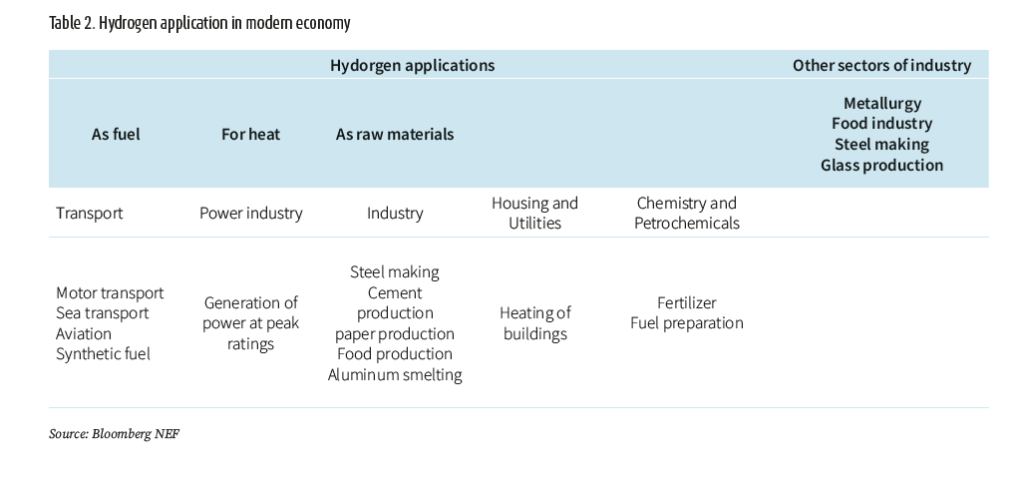


A study to assess the decarbonization potential of basic industries begins with consideration of fuel and energy complex (FEC)*, which is one of the most energy-intensive sectors of the country's economy and represents a complex system consisting of production, extraction of fuel and energy resources, their transportation, distribution and consumption of both primary and converted types of energy carriers, which includes: electric power, coal industry, gas and oil industry.
It is determined that emissions of pollutants from electric power facilities account for 43-45% of the total emissions of all stationary sources, one third of which are ash emissions. Emissions from thermal power plants account for up to 70% of the total emissions of electric power facilities. Most thermal power plants use coal with high ash content, ranging from 30% (Karaganda coal) to 45% (Ekibastuz coal). The amount of fly ash, sulfur oxides and nitrogen formed in boilers depends on the type and quality of the fuel burned. In comparison with the indicators of 1990, the volume of emissions of pollutants (sulfur dioxide, nitrogen oxides, carbon monoxide, hydrocarbons, VHF) in 2020 decreased by an average of two times. This was facilitated by a decrease in level of production and installation of cleaning equipment at the fuel and energy complex enterprises. At the same time, stationary sources of decentralized heat supply, which are autonomous boiler houses and heating furnaces, make a significant contribution to pollution of air basin. The established standards for emissions of solid particles in the fuel and energy complex are 14 times higher than EU standards (RK - 700 mg/m3, EU - 50 mg/m3), while the process of achieving EU emission indicators complicates deterioration of power equipment (up to 50% and above) at CHP, TPP and GRES. Methane emissions and leaks in the oil and gas sector are up to 45% of all emissions and, accordingly, occupy a significant share in composition of greenhouse gases.

The authors believe that it is possible to achieve a significant reduction in emissions in order to achieve European standards and reduce greenhouse gas emissions, provided that significant investments are made in upgrading the technological equipment of thermal power plants and switching to more environmentally friendly fuel. To reduce the carbon intensity and increase the energy efficiency of coal-fired thermal power plants, modernization is required, including:
1) installation of efficient flue gas cleaning systems;
2) improving fuel efficiency, reducing emissions of nitrogen oxides, sulfur, carbon dioxide and suspended particles;
3) switching to ultra-supercritical steam parameters, which allows reducing carbon dioxide emissions by 19% (all other things being equal), and further increasing the parameters to advanced ultra-supercritical (advanced USC, A-USC) to reduce emissions of CO 2 by 30%;
4) introduction of cogeneration regime that allows coal-fired thermal power plants to significantly increase the efficiency index and reduce carbon dioxide emissions;
5) co-combustion of coal and biomass as a way to increase the energy efficiency of coal-fired thermal power plants;
6) introduction of CO2 capture technologies.
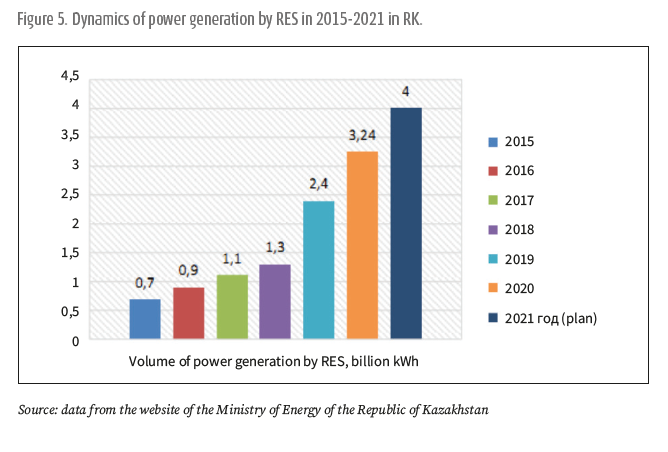
To implement the climate agenda of the oil and gas sector, it is required:
1) to assess the carbon footprint, including an analysis of projected emissions and an annual greenhouse gas report;
2) to develop decarbonization strategy for each oil and gas company focused on reducing methane and carbon dioxide emissions;
3) to implement energy-efficient measures, introduction of energy-saving technologies, energy-efficient equipment with a high energy saving index, including the use of renewable energy sources;
4) to reduce hydrocarbon leaks and their costs for own needs of oil and gas companies;
5) to increase useful life and utilization of associated petroleum gas (APG) as a way to reduce greenhouse gas emissions.
The country's resource potential by types of renewable energy is determined * by: wind power - 920 billion kWh/year; hydropower - 62 billion kWh/year; solar energy - 2.5 billion kWh/year; thermal potential of geothermal waters - 4.3 GW.
The most significant of all RES is the potential of wind energy. In about 50% of the territory of Kazakhstan, the wind speed at an altitude of 30m is 4-5 m /s. The highest wind potential is available in the area of Caspian Sea - Atyrau and Mangistau regions, as well as in Northern and Southern Kazakhstan.
Hydropower is the second largest source of electricity generation in Kazakhstan, accounting for about 10.9% of the country's total generating capacity. According to absolute indicators of potential hydro resources, Kazakhstan ranks third among the CIS countries. The authors substantiate promising directions for use of various renewable energy technologies by households, including:
1) solar collectors – for purposes of hot water supply and heating, especially in areas that do not have central heating networks;
2) use of renewable energy by small and medium-sized businesses and peasant farms.
Investigating the mining and metallurgical complex (MMC) of Kazakhstan, the authors found that the complex has a potential of 10-15% in the field of reducing the carbon intensity of production, which can be realized through the use of digital approaches associated with the introduction of operational monitoring and optimization of the main technological processes. One of the measures of decarbonization of the MMC may also be inclusion of measures for technological modernization aimed at energy efficiency and reducing carbon intensity in public-private partnership in the list of projects of the Industrialization Map of Kazakhstan.
In conclusion of monograph, the authors developed specific proposals to the Government of the Republic of Kazakhstan on decarbonization of basic industries, taking into account green financing mechanisms, including development of a green taxonomy and launch of greenbonds market*. In general, the research results presented in this monograph served as a theoretical and methodological basis for development of Strategy to achieve carbon neutrality of the Republic of Kazakhstan by 2060. Individual developments of the authors of the monograph, in particular, on development of hydrogen, geothermal power generation, use of absorption technologies and use of green and climate finance mechanisms are used in the work of line ministries, departments, as well as in development of corporate decarbonization strategies for individual enterprises.
Training of personnel for renewable energy sector
In the XXI century, energy security has become one of the main global problems. The growing demand for energy, decrease in oil reserves, climate change and a number of other factors have led to search for new energy sources. One of the solutions to these problems is transition to renewable energy sources (RES), such as solar, wind and hydropower.
Energy security education plays an important role in achieving these goals. It helps to raise awareness about the possibilities of using renewable energy and reduce dependence on oil and gas. In addition, training on renewable energy can help improve energy efficiency and reduce energy consumption.
In Kazakhstan, the topic of energy crisis is especially relevant, since the country is facing problems of electricity shortage, obsolescence of generating capacities of traditional stations and growth of emergency repairs, shortage of balancing capacities and dependence on flows from neighboring states.
Many countries around the world have begun to pay more attention to renewable energy. Instead of traditional courses on design of energy systems, many educational institutions began to develop specialized courses on renewable energy. Such courses include various aspects of use of solar, wind, and hydropower. They teach students how to plan, design and build appropriate renewable energy systems.
Australia has long been aware of the importance of using renewable energy for sustainable development of the country and the fight against climate change. For example, Murdoch University offers a master's degree to those who are interested in pursuing a career in the renewable energy and sustainable energy sector. The Master of Renewable and Sustainable Energy program covers a wide range of topics, including renewable energy technologies, energy efficiency, sustainable development and policy. Students gain a deep understanding of technical, economic and social aspects of renewable energy, as well as practical skills necessary for design, implementation and management of renewable energy projects.
In addition, Murdoch University has access to an open test site where students study renewable energy technologies in practice. The university's electrical engineering and renewable energy program includes employment, where the students can get 300 hours of real work experience. This experience allows them to apply the knowledge and skills gained in the classroom in real situations.
In turn, the Australian National University provides students with a two-year Master of Engineering in Renewable Energy program. The program is based on interdisciplinary engineering orientation of the university and research experience to develop students' skill of solving complex interdisciplinary problems, while simultaneously provide advanced technical knowledge in the field of renewable energy.
The program includes a mandatory set of courses that provide advanced training for engineers, and specialized knowledge in the field of energy resources (including renewable and non-renewable) and renewable energy integration. In addition, students need to take at least two courses on renewable technologies, including the generation of energy from solar and wind resources.
At the Technical University of Denmark, students can study for a Master of Science in Sustainable Energy (MSc). The program covers a wide range of topics, including energy management, energy policy, energy markets, renewable energy technologies, energy efficiency and sustainable development. Students also have the opportunity to specialize in areas such as wind energy, solar energy, energy storage or smart grids.
The program includes both coursework and research project that allows students to apply their knowledge in practice, solving problems in the field of sustainable energy. Graduates of the program are well prepared to embark on a career in the sustainable energy sector, working in areas such as energy planning, energy consulting, project management, and research and development.
It should be noted that education in the field of renewable energy is a relatively new branch. In Kazakhstan, to this day, this direction occupies an insignificant part of the traditional courses of electric power, energy, and engineering. Today there are only four programs that focus on renewable energy.
In Central Asia, the first specialized master's program in the field of renewable energy was the program of Kazakh-German University Strategic Management of Renewable Energy and Energy Efficiency, which was developed in cooperation with leading universities in Germany and is supported by the German Ministry of Foreign Affairs and the USAID regional program "Energy of Central Asia".
Students of this program receive theoretical and practical knowledge and skills in the creation and management of renewable energy facilities, as well as in the management of entire range of issues related to the development of "green" energy, including energy conservation and energy efficiency.
Al-Farabi Kazakh National University (KazNU) offers master's degree that includes lectures on the development of solar energy. After completing this program, graduates will be able to describe the main characteristics of photovoltaic cells, solar thermal power plants and the physical principles of conversion and storage of electrical energy. They will also be able to carry out modeling and calculations of efficiency of solar heat supply systems, energy storage and transmission systems in order to optimize their parameters and operating modes.
Graduates will also be able to apply a scientific and systematic approach to the calculation and design of electronic control units, power electronic units, energy storage devices, solar tracking systems, solar concentrators and power plant components, as well as predict the output power of photovoltaic power plants.
G. Daukeyev Almaty University of Energy and Communications (AUEC) is among the leaders in the field of personnel training in the energy sector in Kazakhstan. One of the programs available to students is a bachelor's degree in modern and innovative renewable energy technologies. This program offers students the knowledge and skills necessary for design of renewable energy facilities, organization of their operation and maintenance. The educational process of the program is supported by a high-quality material and technical base. Within the framework of the program, students have access to the educational and research laboratory "RES and Energy Saving", which is equipped with modern laboratory stands for wind power plants operating in grid and offline mode, solar photovoltaic systems.
In addition, AUEC students study at the Bachelor's degree in Hydropower engineering. Graduates of this program are engaged in development of projects in the field of hydropower, hydroelectric power plants, relay protection and automation of electric power systems, power supply of enterprises. They also carry out technical, economic and environmental analysis of hydroelectric power plants and are engaged in installation, commissioning, operation and repair of technological equipment of hydroelectric power plants. Future specialists solve modern problems in the field of energy, water management and hydropower related to operation and design of parameters and modes of hydropower plants.
The renewable energy sector continues to develop rapidly, and it is already beginning to occupy a significant share in the global energy sector. This growth will inevitably lead to the emergence of new jobs and change in the requirements for existing ones. The Atlas of new Professions and Competencies of Kazakhstan has a number of future professions related to the field of renewable energy, which may become in demand in the near future.
One of these professions is a meteorological power engineer. Meteorological power engineer is a specialist who will provide solutions to new tasks, such as determining the need for balancing energy capacities due to weather changes, maintaining an ecological balance when installing generating power plants. The main difference between alternative energy and traditional energy is the uneven generation of alternative energy and decentralization of energy generation points. Energy production from non-traditional sources depends on the time of day, weather conditions and other factors. In order to comply with the global energy balance, it is necessary to quickly enter balancing generation capacities. The amount of balancing energy to be injected is determined by the weather forecast and climatic factors: wind strength and direction, temperature, and more. Therefore, the meteorological power industry will play an important role in the field of renewable energy.
Another promising profession is biomass specialist. Biomass is an organic material that can be used for energy production. It is produced from a variety of sources, including animal and plant waste, as well as some types of vegetation. Use of biomass as an energy source is becoming increasingly popular in light of the problems of climate change and the need to switch to renewable energy.[9]
The profession related to obtaining biomass for energy production is new for Kazakhstan. This profession will require specialists to have knowledge in the field of creating technologies for obtaining energy from biomass, determining the sources of biomass production, adapting biomass technology to new conditions and selecting power plants that are optimal for obtaining energy from the biomass used.
In addition, within the framework of grant funding for 2022-2024, the Ministry of Science and Higher Education of the Republic of Kazakhstan is financing 18 projects in the field of energy, eight of which are related to renewable energy. Astana IT University is implementing a project to develop a roadmap for development of renewable energy for Kazakhstan with high spatial, temporal and technical disaggregation using hybrid modeling of the energy system.
Academician Ye. Buketov Karaganda University is implementing two projects aimed at developing new designs of wind power plants. The first project is related to the numerical study of a new design of the blades of a wind power plant with a horizontal axis of rotation. The second is aimed at creating an energy-efficient combined vertical-axial wind power plant using a gearless low-speed electric generator.
On the other hand, K.Satpayev Kazakh National Research University (KazNITU) is implementing a project within the framework of which a new design of a modular wind power plant with a fixed vertical axis is being developed.
KazNU is developing an innovative water electrolyte for high-energy metal-ion batteries. ENU is developing a technology for producing composite ceramics based on oxides and nitrides for alternative energy and new classes of structural materials.
The Academy of Logistics and Transport is developing an experimental energy complex based on a modernized boiler plant using biofuels.
Nazarbayev University is engaged in development and research of technology for obtaining and improving oxide-dispersion hardened steel for use in nuclear power.
Within the framework of program-targeted financing for 2021-2023, the National Nuclear Center of the Republic of Kazakhstan is implementing a program in the field of energy aimed at developing technologies for production and storage of hydrogen for development of alternative energy.
In addition, ENU is developing new types of structural materials for nuclear power and protection from ionizing radiation. This work is extremely important because radiation protection plays a key role in the safety of nuclear power plants.
In conclusion, it can be emphasized that the training of qualified personnel for the renewable energy sector is of great importance. This is one of conditions for development of an environmentally sustainable economy and reducing the negative impact on the environment. In Kazakhstan, there are a number of study programs at universities, including KNU (Strategic Management of Renewable Energy and Energy Efficiency), KazNU ("solar energy"), AUEC ("modern and innovative renewable energy technologies", "hydropower").
Considering the scale of global problems, such as the energy crisis, climate change and environmental protection, vocational education in the field of renewable energy is becoming more relevant and in demand. The Atlas of New Professions and Competencies of Kazakhstan highlights promising professions related to renewable energy that may become in demand in the near future, for example, a meteorological power engineer and a biomass specialist.
Based on the information provided by the Ministry of Higher Education and Science of the Republic of Kazakhstan, 18 programs are currently being funded in the field of energy and energy conservation, eight of these projects are aimed at developing renewable energy.
Thus, thanks to the training of qualified specialists who can work in the renewable energy sector, Kazakhstan can continue to develop renewable energy and contribute to the achievement of global goals in the field of combating climate change and environmental protection.
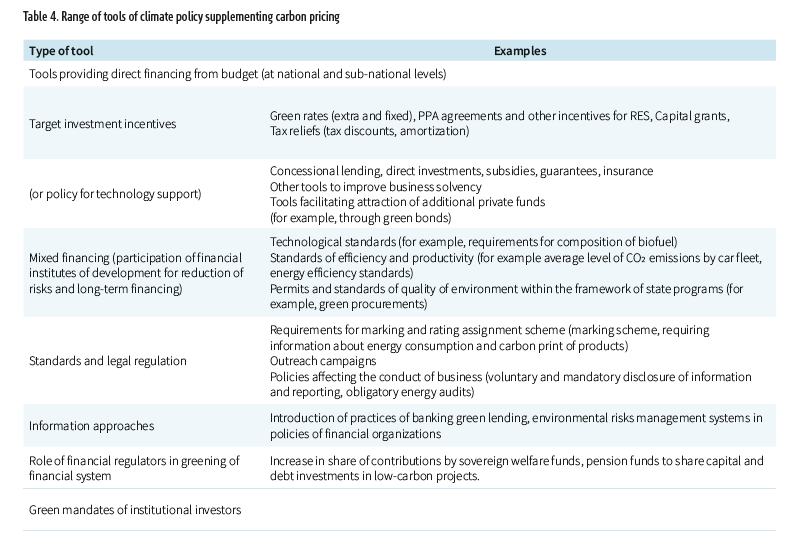
Kazakhstan and UAE reaffirm strategic energy partnership with 1 GW wind project
Solar becomes EU’s top power source for the first time ever
How decentralised renewables transform healthcare services in rural Zimbabwe
Chinese company to build solar and wind power plants in Kyrgyzstan
Seaturns raises €2.45 million to industrialize wave energy technology and accelerate global rollout
Trump signs executive order to end subsidies for wind and solar energy
Uzbekistan's solar and wind power plants generate 5 Billion kWh since beginning of the year
Green Corridor Alliance JV registered in Baku to promote green energy development in Central Asia and the South Caucasus
In the EU renewable energy supply grew by 3.4% in 2024
IRENA accepting renewable energy project proposals in Central Asia until August 15
Astana to host Electronica Expo Kazakhstan Electronics Exhibition
WB gives rundown of Azerbaijan's green energy grid volume prospects
US solar sets new records as renewables nearly match natural gas – EIA
‘Wings’ on poles: Bill Gates-backed breakthrough wind turbine facility breaks ground
Perovskite tandem solar cell achieves new efficiency record
Kazakhstan and China endorse draft SCO joint statement on sustainable energy development
Innovative research on organic solar cells for space applications
Kazakhstan and Uzbekistan drive green energy progress in Central Asia
KazMunayGas launches pilot green hydrogen project in Atyrau
How private homeowners in Kazakhstan can make money from solar panels











